Mouse coloring pages offer a simple yet enjoyable way to tap into your creativity and relax. Whether you’re a parent searching for a fun but educational activity for your kids, an art enthusiast seeking a new project, or someone looking for a soothing pastime, these mouse-themed coloring sheets offer a delightful and accessible avenue for self-expression. Join us as we dive into this world of adorable rodents and the joy of bringing them to life on paper.
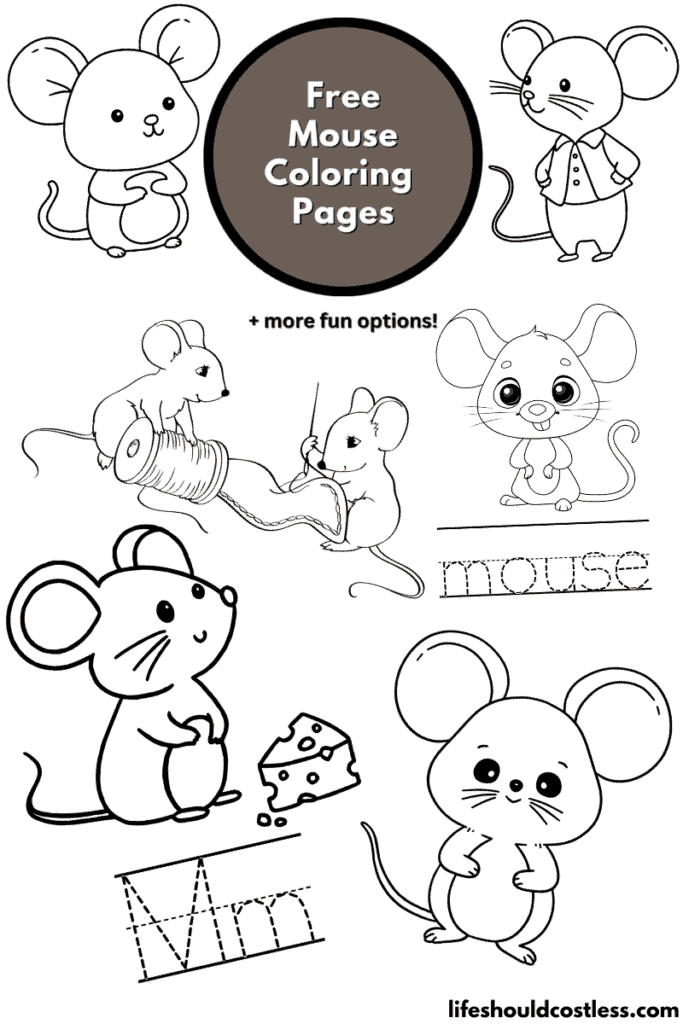
You’re welcome to opt for any design that appeals to you. Just pick the template you like, access the free PDF, print it out, and give free rein to your coloring imagination.
Moreover, these templates can double as handy guides for embroidery projects or serve as a wellspring of inspiration for intricate fine-line tattoos.
Your creative options are as boundless as your own imaginative capacities permit.
Mouse facts
If you’re new to my coloring pages, it’s worth noting that I take pleasure in offering you a chance to immerse yourself in the subject matter.
This allows you to effortlessly turn your coloring session into an educational adventure. With that in mind, let’s get started!
Mice are fascinating creatures with a wide range of intriguing characteristics and behaviors.
Here are lots of fun and interesting facts about them:
- Diverse Species: Mice belong to the family Muridae and are found all over the world. Some common species include the house mouse (Mus musculus), field mouse, and deer mouse, among many others.
- Size Variation: Mice come in various sizes, ranging from the tiny African pygmy mouse, which measures only about 3 inches (7.6 centimeters) in length, to the larger wood mouse, which can grow up to 8 inches (20.3 centimeters).
- Exceptional Reproduction: A single female mouse can produce up to 10 litters in a year, with each litter containing about 6 to 8 pups. In metric, this means one female can give birth to as many as 80 baby mice annually.
- High Metabolism: Mice have a rapid metabolism and can eat up to 15-20 times a day to sustain their energy levels.
- Omnivorous Diet: Mice are opportunistic feeders and will eat almost anything, including grains, seeds, insects, and even small vertebrates. Their diet varies depending on their environment.
- Exceptional Jumpers: Mice are excellent jumpers and can leap more than 30 centimeters (12 inches) in the air.
- Nocturnal Behavior: Most mice are nocturnal, meaning they are most active during the night. This behavior helps them avoid predators and conserve energy.
- Keen Sense of Smell: Mice have an acute sense of smell, which they use to communicate, find food, and detect predators. They can even distinguish between different scents and pheromones.
- Grooming Habits: Mice are fastidious groomers and spend a significant amount of time cleaning themselves. They use their front paws to wash their faces and bodies.
- Territorial Creatures: Mice are territorial and mark their territories with urine and scent markings.
- Exceptional Navigators: Mice have a remarkable ability to navigate through complex mazes and remember their paths.
- Social Animals: Many mouse species are social and live in groups called colonies. They exhibit complex social hierarchies and communication systems.
- Stem Cell Research: Mice have played a crucial role in scientific research, especially in the field of genetics. They share a high percentage of their genes with humans, making them valuable for studying genetic diseases and potential treatments.
- Balancing Act: Mice have an incredible sense of balance, which allows them to walk along narrow ledges and climb vertical surfaces.
- Musical Talent: In some cultures, mice are associated with music and folklore. The tale of the “Musicians of Bremen” from the Brothers Grimm features a band of animals, including a mouse, who become musicians.
- Escape Artists: Mice are known for their cleverness and ability to escape from traps and cages. This has led to the development of more sophisticated traps and experiments in problem-solving.
- Longevity: In the wild, mice typically have shorter lifespans due to predation and environmental factors. However, in controlled laboratory settings, they can live up to 2-3 years.
- Habitat Adaptability: Mice are highly adaptable to various environments, which has contributed to their global distribution. They can be found in fields, forests, urban areas, and even deserts.
- Cultural Significance: Mice have appeared in folklore and literature across the world, often symbolizing different qualities such as resourcefulness, curiosity, and perseverance.
We learned lots about mice, but there’s much know to know.
If you would like to read more about them, here are some other reputable resources to check out.:
- https://en.wikipedia.org/wiki/Mouse
- https://kids.britannica.com/kids/article/mouse/353498
- https://www.nationalgeographic.co.uk/topic/subjects/animals/mammals/rodents/mice
- https://www.wildlifeillinois.org/gallery/mammals/other-mammals/mice/
- https://www.thesprucepets.com/choosing-and-caring-for-pet-mice-1236741
- To see all of my free printables, go here.
- If you would like to see an alphabetized index of free printable coloring pages, go here!
- All of my animals coloring pages are found here.
- Or, my other mammals coloring pages can be found here.
Coloring tips
Coloring a picture of a mouse can be a delightful and creative experience.
Here are some of my best tips and tricks to enhance your mouse-themed artwork:
- Gather the Right Supplies: Start by selecting the appropriate coloring supplies. Colored pencils, markers, crayons, or even watercolor paints can work well for coloring mouse/mice pictures. Choose quality materials for better results.
- Reference Images: Use reference images of real mice or illustrations to understand their colors and patterns. This can help you achieve a more realistic or artistic look, depending on your preference.
- Choose a Focal Point: Decide on the focal point of your coloring page. Is it the mouse itself, or is there a background or scene you want to emphasize? This will guide your color choices and detailing.
- Consider Fur Texture: Mice have soft, furry coats. To create a realistic appearance, experiment with different shading techniques to convey fur texture. Use short, controlled strokes with your coloring tool to mimic the look of fur.
- Layering Colors: Layering colors can add depth and dimension to your mouse. Start with a light base color and gradually build up darker shades for areas in shadow. Blending colors can create a smoother transition.
- Focus on the Eyes: A mouse’s eyes are often a captivating feature. Pay special attention to them. You can use a glossy finish or lighter shades to make the eyes appear shiny and expressive.
- Consider the Lighting: Imagine where the light source is coming from in your picture. This will help you determine where shadows and highlights should fall. Consistent lighting adds realism.
- Experiment with Backgrounds: If your coloring page includes a background, think about how it complements the mouse. You can create a contrast or harmony between the mouse and its surroundings, depending on the mood you want to convey.
- Blend Colors Smoothly: For a smooth and professional look, practice blending colors. You can use blending tools or simply layer colors with varying pressure to achieve smooth transitions.
- Use a Color Chart: Create a color chart or swatch palette before starting to help you plan your color scheme. This can prevent color choices that clash or look unnatural.
- Experiment with Patterns: If you’re feeling adventurous, you can add patterns to your mouse’s fur. Stripes, spots, or other unique markings can give your mouse a distinct personality.
- Practice, Practice, Practice: Like any skill, coloring improves with practice. Don’t be discouraged if your first attempts don’t meet your expectations. Keep experimenting and refining your technique.
- Take Breaks: Coloring can be a relaxing activity, but it’s important not to rush. Take breaks to rest your hand and eyes to maintain focus and avoid fatigue.
- Enjoy the Process: Lastly, remember that coloring should be enjoyable. Don’t worry too much about achieving perfection. Embrace your creativity, have fun, and let your unique style shine through.
Coloring pictures of mice can be a therapeutic and rewarding experience.
Whether you’re aiming for realism or going for a more artistic whimsical interpretation, these tips can help you create beautiful and expressive mouse-themed artwork.
Options For Printing:
Letter M is for mouse writing practice worksheets
*My letter M is for mouse coloring sheet printables have been exclusively crafted for classroom use and do not require written permission for public use from this page.
However, if someone inquires about their origin, please share the link to this post with them. Your support is greatly appreciated!
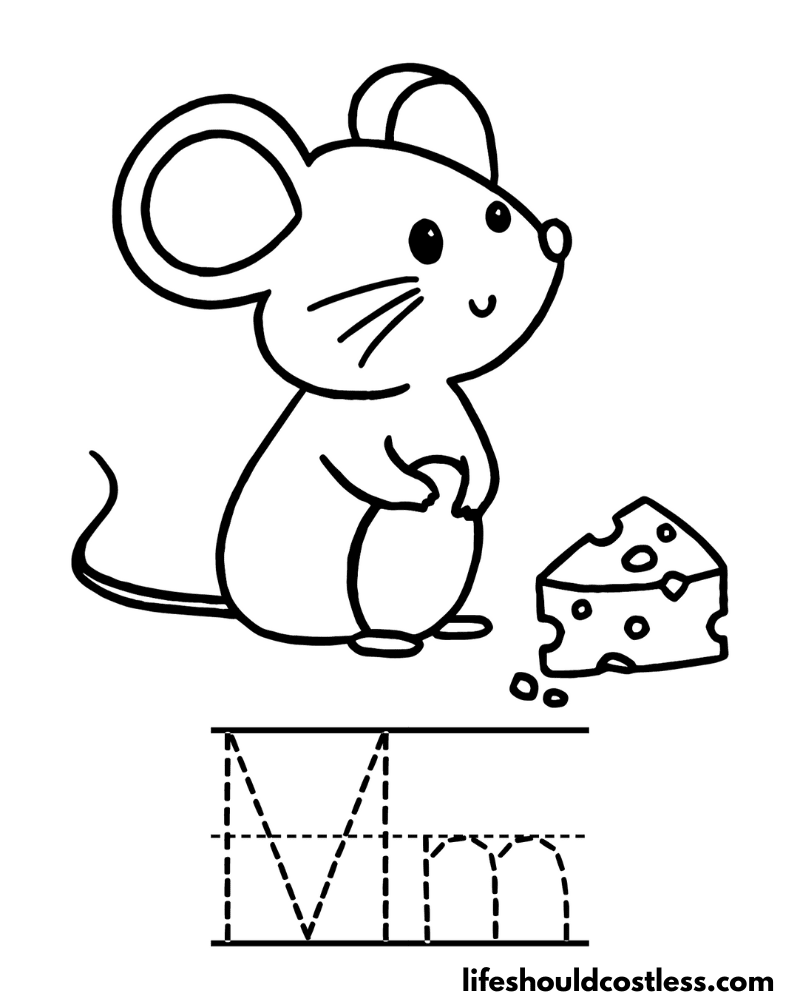
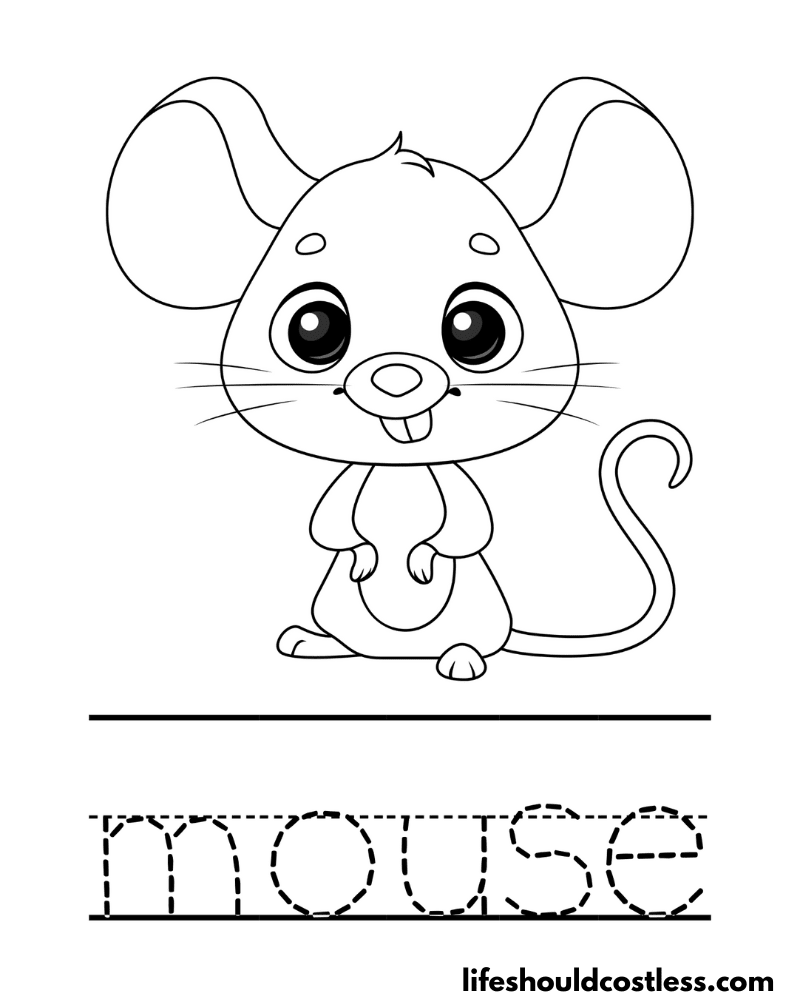
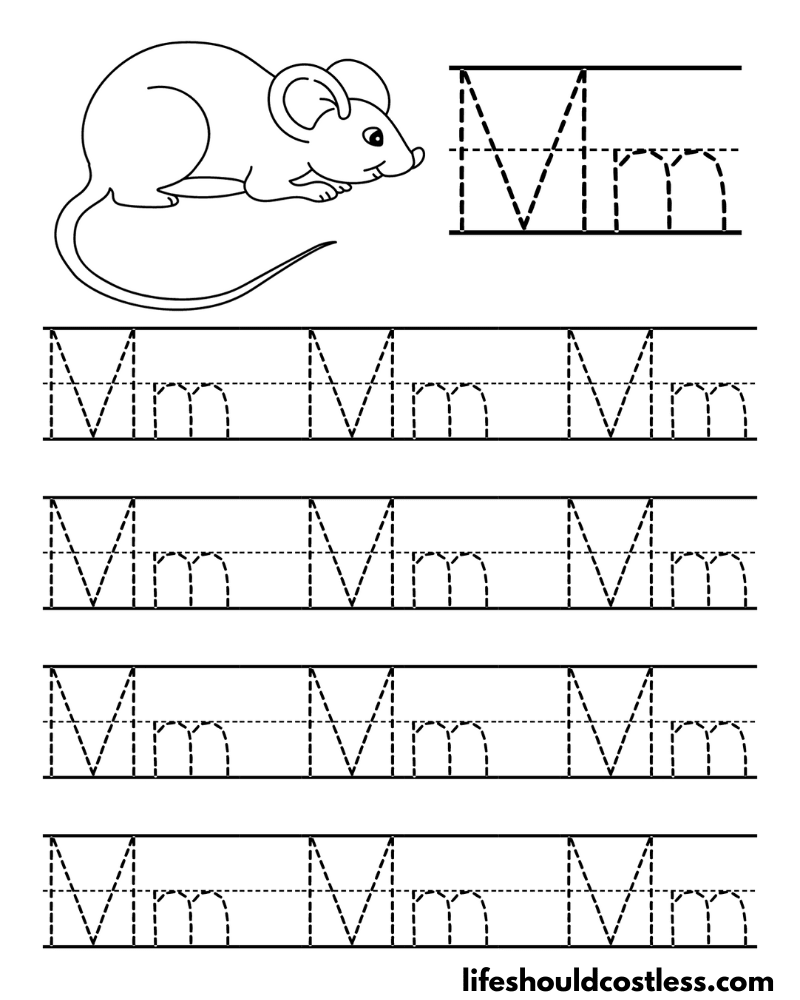
Various mouse designs
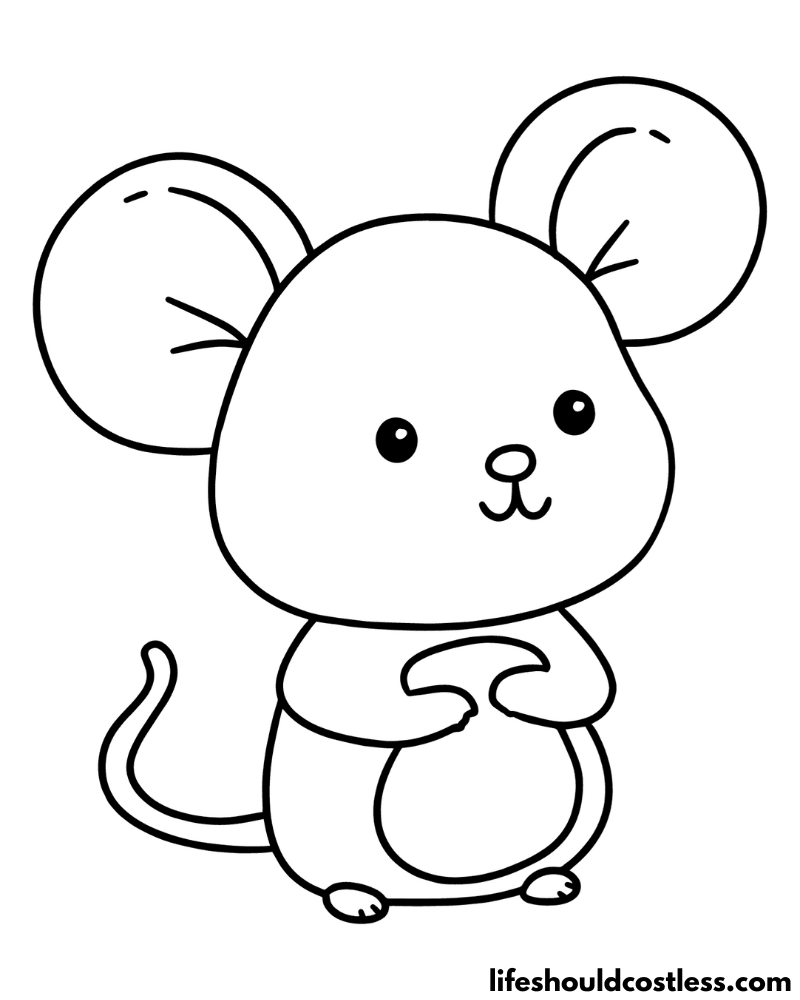
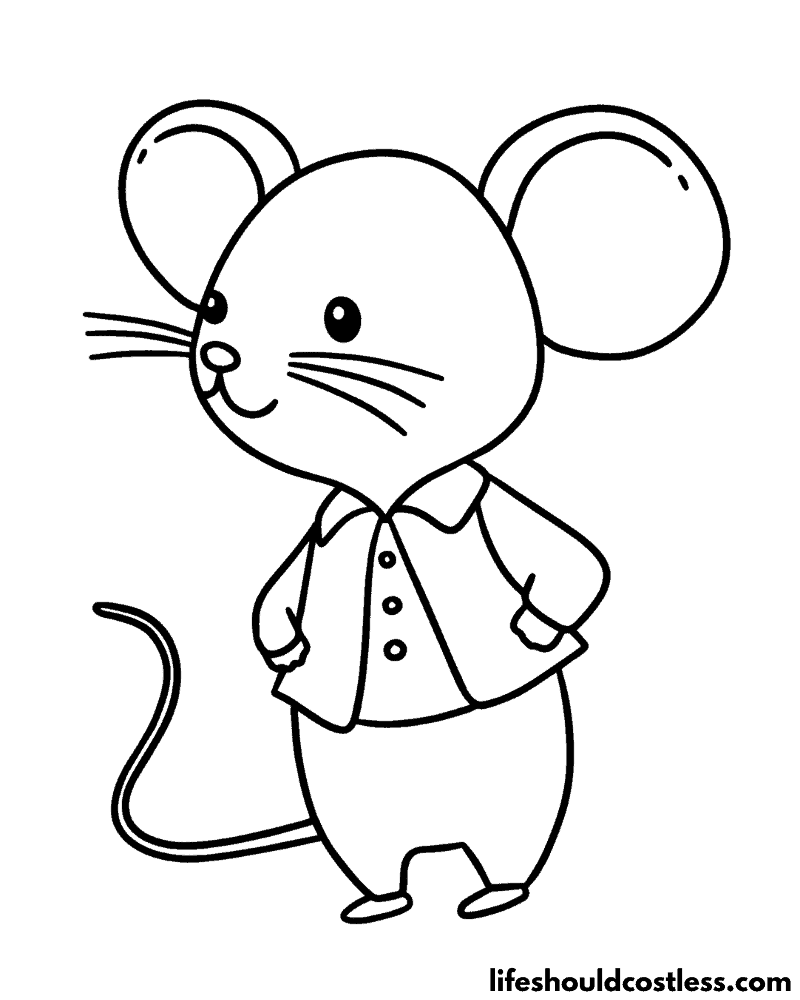
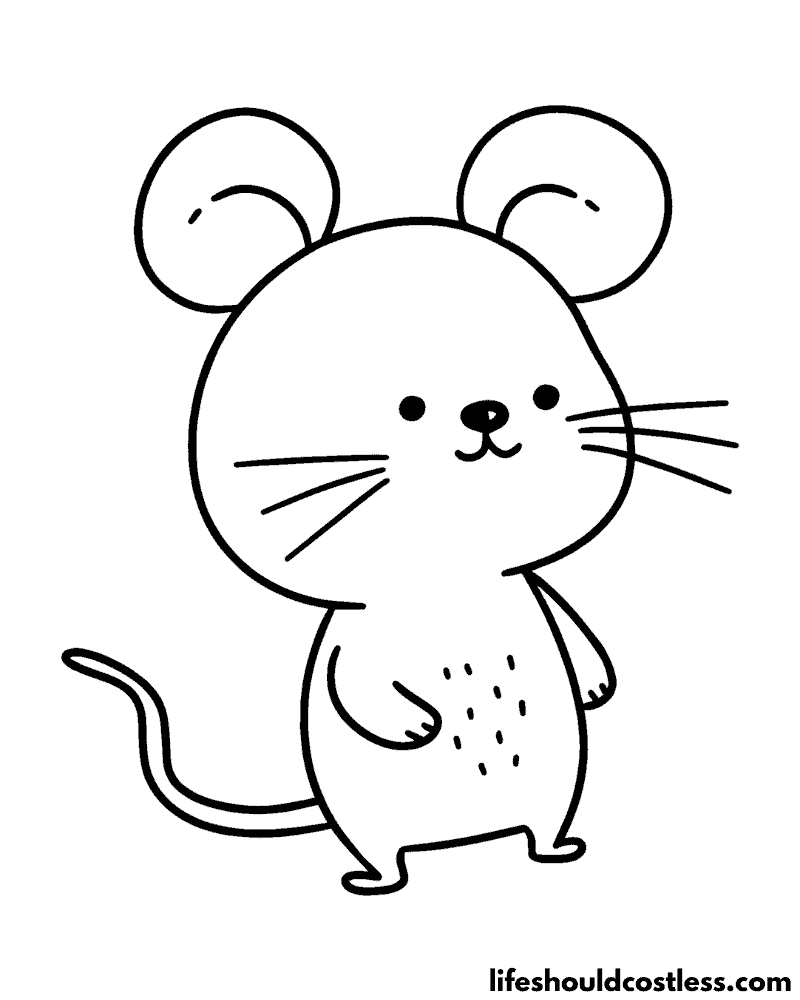
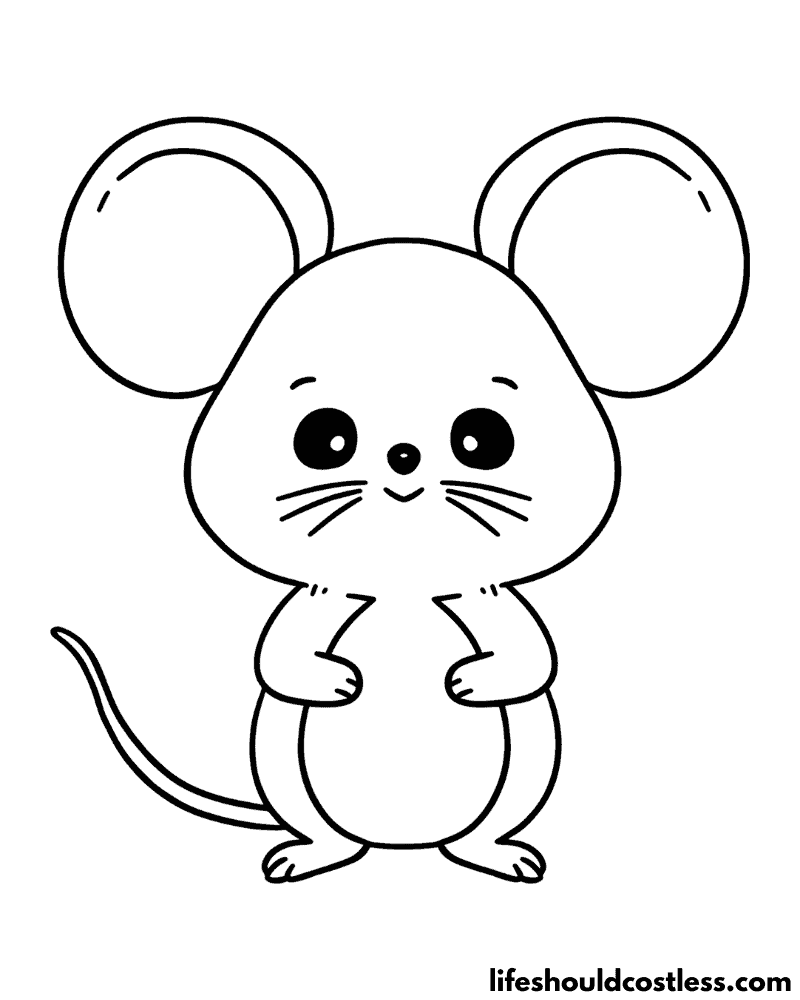
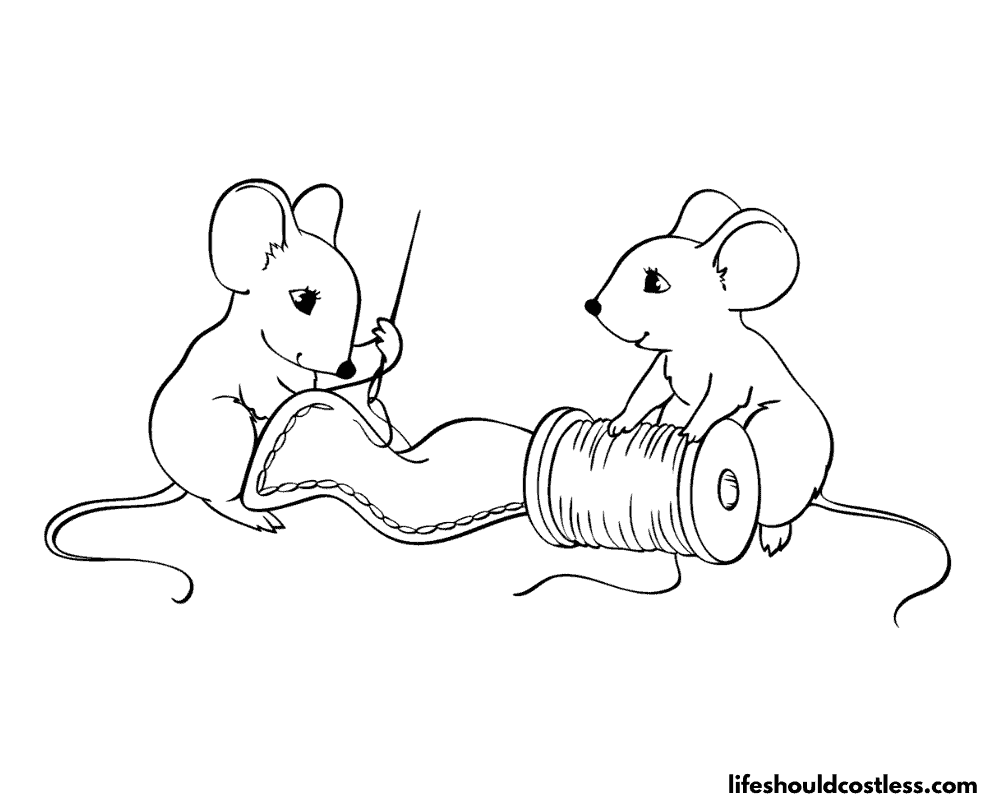
FAQ’s
The color of a mouse can vary significantly depending on the species and individual characteristics. House mice (Mus musculus), one of the most common mouse species, typically have fur that is brown or gray with a lighter-colored belly. However, their exact shade can range from light brown to almost black.
In addition to the common brown or gray coloration, there are various mouse species with distinct color patterns. For example, the deer mouse often has a reddish-brown coat with a white belly, and some mice may have albino or white fur.
So, the color of a mouse can be quite diverse, and it depends on the species, genetics, and even environmental factors.
Rats and mice can come in a range of colors and patterns, and there is considerable variation among species and individuals. However, there are some general differences in coloration that can help distinguish between rats and mice:
Rats:
Brown and Gray: Common rats, like the Norway rat (Rattus norvegicus) and roof rat (Rattus rattus), often have brown or gray fur with a lighter-colored belly. Their fur can range from light to dark shades within these color groups.
Black Rats: Roof rats are sometimes referred to as black rats due to their tendency to have darker fur, although this can vary.
Agouti Patterns: Some rats display agouti patterns, which consist of bands of different colors along their fur. These patterns can create a mottled appearance.
Hooded Rats: Hooded rats have a distinctive pattern with a solid-colored body and a “hood” of a different color covering their head and shoulders.
Mice:
Brown and Gray: Like rats, common house mice (Mus musculus) often have brown or gray fur with a lighter-colored belly. Their fur can range from light to dark shades within these color groups.
Albino Mice: Some mice may have a white or albino appearance with pink eyes due to a lack of pigment.
Fancy Mice: Fancy mice are bred for their unique and diverse coat colors and patterns. They can come in a wide array of colors, including black, white, tan, and various shades of brown and gray. Some have striking patterns, such as spots or stripes.
Tail: Mice generally have a longer, more slender tail compared to rats.
It’s important to note that there are many species of rats and mice, and individual variations in color and pattern can be significant.
Additionally, both rats and mice have been bred for specific traits, leading to a wide range of color variations in pet and laboratory strains.
Therefore, while there are some general trends in coloration, it’s not always possible to definitively distinguish between rats and mice based solely on color.
Other characteristics, such as size, body shape, and tail length, are also important factors for identification.
*I will add more mouse colour / color questions and answers as the questions get sent to me.
Conclusion
In conclusion, these mouse coloring pages offer a delightful avenue for creativity, education, and self-expression.
Whether you’re a parent seeking an engaging activity for your children, an art enthusiast looking for a new project, or simply someone who appreciates the charm of these tiny creatures, these coloring pages provide an opportunity to bring the world of mice to life through color and imagination.
From realistic renditions to whimsical interpretations, the possibilities are as vast as your creativity allows.
As we’ve explored the fascinating world of mice through coloring, we’ve discovered that these humble rodents can serve as both artistic muses and educational tools, showcasing the power of art to engage, inspire, and connect us with the natural world.
So, pick up your coloring tools, embrace your inner artist, and let your imagination run wild as you bring these captivating creatures to life on paper.
Happy coloring!
Thanks so much for stopping by my blog and supporting my endeavors to make people’s lives a little easier/better/more affordable.
If you liked this post, or found it helpful in any way, please make sure to share it with your family, friends, and co-workers via social media.
Or you could even send them the direct link via email. Whichever way you choose to spread the love, I super appreciate it! ~Sarah

How To Follow & Support This Site
- If you would like to subscribe to my email list, go here.
- Make sure to follow along via social media, by going here.
- If you would like to learn how to really show your support to this site (at no cost to you), go here.
- If you would like to make a direct donation to the site, go here.
Check out my other free printables
- To see all of my free printables, go here.
- If you would like to see an alphabetized index of free printable coloring pages, go here!
- All of my animals coloring pages are found here.
- Or, my other mammals coloring pages can be found here.
Otherwise, here are direct links to several of my other related posts that you’re also going to love:
Animals / Mammals
Animals / Birds
Animals / Insects
Other good resources for a printable mouse
- https://itskimmi.com/pages/mouse-coloring-page
- https://www.alamy.com/mouse-coloring-page-isolated-for-kids-image455725233.html
- https://thetucsonpuppetlady.com/downloads/free-mouse-coloring-page/
*This post was originally shared to this blog on 10/02/2023, and has since been updated to improve user experience, add video instruction, as well as to make it as shareable as possible across the social medias.
**Please note that I do try my hardest to provide factual, but easy to understand, information about each topic. If you notice a discrepancy in my coloring pages, facts, or see something that you deem “misinformation/incorrect” please make sure to notify me about it. I would prefer that you send me an email with a link to a more reputable resource on that subject, so that I can correct it as soon as possible. Thanks so much for helping this site become the best that it can be!
***Resources from djinkers were used in the production of this article.
***Resources from djinkers were used in the production of this article.
